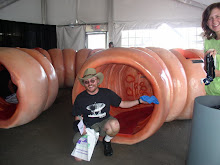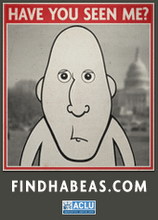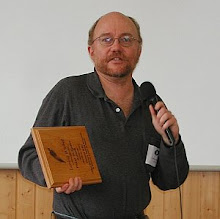Destroyed by hippie powers - 1967-68
If there was a particular personal relevance to The Beatles’
release of Sgt. Pepper’s Lonely Hearts Club Band a few days after my
tenth birthday, it did not reside in the music itself, nor in the odd fashion
and art advances taken by the band. It didn’t reside in the wider cultural
tsunami hitting on the eve of the Summer of Love. Instead, it jolted me into
realizing that the long-playing album was becoming a statement in its own right,
favored by bands that were getting far too ambitious to be contained by two
sides of a single. There was no hint of
any imminent death knells for the 45 – the spring had been the era of Aretha’s
“Respect,” “The Rascals’ “Groovin’,” Tommy James’ “I Think We’re Alone Now,” Martha
and the Vandellas’ “Jimmy Mack,” The Buckinghams’ “Don’t You Care,” The
Supremes’ “The Happening,” and songs from dozens of other bands seeking to
continue the spirit of ’66.
But in a sudden flash, the strategy of
creating a musical statement midway in length between a 30-minute TV sitcom,
and an hour-long TV drama, made perfect sense. The Beatles already had been
breaking boundaries aplenty, in the multimedia marketing for the
‘Rain”/”Paperback Writer” single, and particularly in the strange
instrumentation and arrangements for both the Rubber Soul and Revolver
albums. But fans had not experienced the level of storytelling evident in Sgt.
Pepper. The LP suddenly was meant to be taken seriously.
The purpose of the long-player no longer was to stuff hits and covers into 40 minutes, but to let an artist “say something,” as superfluous as that might often be. While my friends had rushed to buy the first two albums by The Monkees in order to gain maximum hits per dollar, I’d opted for The Monkees’ Headquarters, the first album with no true Top 40 hit. I started ransacking the $1 LP bargain bin at the D&C Store, snaring such puzzling but critical artifacts as Tim Buckley’s Goodbye and Hello, and Donovan’s Sunshine Superman. I wasn’t searching for something to explain the hippies or psychedelia, I was merely graduating from the equivalent of short stories to full-length novels.
The first good listen and look at Sgt. Pepper came courtesy of my neighbors the Fitzgeralds, who returned from a trip
to San Francisco with The Beatles album in tow, along with purple octagonal
prism sunglasses for the kids. Early June preceded most of the national news
stories on Haight-Ashbury. It represented an era before Scott MacKenzie’s
anthem “If You’re Going to San Francisco” had cracked the charts. Yet the Bay
Area’s role as hippie central had been marketed in shop windows and TV ads as far
back as mid-1966, so it was no surprise to see small-town middle class parents
pick up hippie relics to bring the kids back home.
The era for a true innocence
of hippie culture resonated somewhat with the 1966 vs. 1967 debate for pop
music’s height. If hallucinogen use was considered a central tenet of the
Summer of Love, the good times only extended from Timothy Leary’s early 1960s experiential
parties to the first be-ins of 1966 featuring the Grateful Dead and the early
Slick-less Jefferson Airplane. Even in that year, many Merry Pranksters were
pushing the limits of informed consent in their distribution of LSD. But by
mid-1967, the Summer of Love already was exposing its unpleasant side - speed
and smack were replacing LSD and pot, at least in the Bay Area.
Pundits are right in
suggesting the West Coast Summer of Love only made a difference to the
100,000-odd teens traipsing to Golden Gate Park that summer, as well as to
smaller groups of youth in other large metropolitan areas. Maybe a few
middle-American savvy adolescents caught an interview with members of the
Jefferson Airplane or the sponsors of various be-ins, but most had more mediocre
connections, often sparked by parents bringing home psychedelic relics. Mama showed
me Marshall McLuhan’s The Medium is the Massage [stet] that summer, and although it was fascinating, the only connection that
stuck for a pre-teen boy was the photograph of the nude female cello players
wrapped in Saran Wrap. I told mom it must be “chello-phane,” and she thought
that I was some kind of genius. The pun just seemed obvious.
My own mecca for that summer
was the beach scene west of Mackinac City, where dad’s friend Ozzie had a beach
bachelor pad. I got to listen to some longer jazz works just as I was
discovering the virtues of LPs. I also satisfied prurient interests with a
stack of Ozzie’s Playboy magazines
featuring a pictorial for the opening of the latest 007 epic, You Only Live Twice. Since the theme song was sung by Nancy
Sinatra, she will always be associated unfairly with soft-core porn in my strange
mind.
I started picking up on
snippets of music theory through Alfred d’Auberge piano lessons that began in
1966, augmented with guitar lessons two years later. Such a music education transition
was near-cliché for pre-teens at the time, often involving negotiations
initiated by parents who demanded piano lessons as a prelude to guitar. I had a
particular love for woodwind sounds as well, so I began fooling around with
tenor sax long before we had school band classes.
From midsummer 1967 to the
summer a year later, there was a running battle in AM radio over where maturity
and bubble-gum would stake respective claims. There was no end to the stream of
psychedelic bands with three-minute gems, from Strawberry Alarm Clock to Electric
Prunes to Blues Magoos to The Status Quo to The Balloon Farm. Time signatures,
keys, and instruments for hits such as “Incense and Peppermints” and “Crimson
and Clover” were taking AM singles to places well outside known safety zones.
Was it legitimate acid-trip experience that drove expansion of acceptable
sounds, or was it marketing? The bands responsible played a schizophrenic dance
of making songs palatable enough for the Top 40, while mixing the songs with
longer jams that would form the backbone of a (self-declared) serious album.
The dual life of Sky Saxon and The Seeds exemplified the path many bands were
taking. Ironically, for a band that later defined disco, The Bee Gees during
those years struggled to outline what sort of hippies they were.
Outside AM radio, experiments
all but inexplicable to pre-teen minds were under way. Even though both artists
eventually produced radio-friendly singles, Jimi Hendrix and Cream both
introduced albums that took music well beyond its previous confines. Without Are You Experienced? and Disraeli Gears, it’s
safe to say that wilder forays in outsider music like Capt. Beefheart’s Trout Mask Replica would never have seen the light of day.
But what is often forgotten
in the reverie for the psychedelic golden era is that many of the bands later
defined as bubble-gum – Ohio Express, 1910 Fruitgum Company – also hit the
charts for the first time in late 1967/early 1968. A certain percentage of the
bands no doubt planned their own careers based on pre-defined agendas pushing
what was later known as Sunshine Pop, with Spanky & Our Gang and Friend &
Lover being examples of consciously-promoted diatribes for positive thinking.
But did the record companies and advertisers play an equal role in pushing
bubble-gum music as an antidote to the rebellion breaking out among members of
middle-class youth? “Yummy Yummy Yummy I’ve Got Love In My Tummy” never felt
like a conscious counter-revolution, it only made identifying cultural
referents all the more difficult and surreal for a pre-teen.
It’s equally fair to point
out that, because the LP as a unified art statement was still in its infancy in
the latter half of the 1960s, the result was often less than stellar. It’s easy
to remember Surrealistic Pillow, Mamas &
Papas Deliver, and Buffalo Springfield Again among the
era’s highlights, but many LPs of 1967-68 didn’t have the staying power of
those recorded and released from 1969 on. Even the best garage bands continued
the 1964-65 trend of filling an album with at least 40% covers of songs from other
bands. While culturally exciting, the psychedelic 1967 and global-revolution
1968 actually represented two years of a musical trough between the explosive
free for all of 1966 and the era of album-oriented rock that really took off
around 1969.
In our precariously
overstuffed elementary school, fifth and sixth grades were relegated to
temporary trailers in the parking lot. This provided a certain gravity and
cachet in moving out of fourth grade and into trailer-trash land. It’s a
universal truth (at least in this country) that middle school is a dress
rehearsal for high school, but it seemed equally true that fifth and sixth
grades prepared the near-tween for practicing cliques and crushes and team
sports. Kids were already swapping rings and going steady at 10 years old in my
rural environs, so it seemed natural that some were pretending to be adults
well before teenage years.
Radio pop became a slippery
mix in the 18 months after Sgt. Pepper. One could choose
to survive on a strict diet of Doors, Jefferson Airplane, and Canned Heat hits,
crafted for a Top 40 market. But the diet was richer thanks to late-period
Motown acts like Temptations and Impressions, as well as R&B coming from
way outside Detroit, like The Foundations from the UK. The most puzzling ingredient
to fit into the pre-teen diet was bubble gum and other syrupy and frothy goodies,
from Bobby Goldsboro to Dion. Sometimes the lite-pop artists surprised us with
their gravity, like Dion’s “Abraham and Martin and John,” arriving soon after
the dual 1968 assassinations of Martin Luther King and Bobby Kennedy. Often
though, a new single by The Grass Roots or Gary Puckett and the Union Gap was
pure pop and nothing more.
There was scarcely a long-player I was
interested in purchasing between Sgt. Pepper and the The
Beatles’ 2-record White Album of
December 1968. But there were many album covers that dimly captured my
attention in the intervening months, suggesting the existence of a world
outside my hometown that was rapidly growing scarier and harder to ignore. News
footage from Vietnam was omnipresent in the months leading up to the February
1968 Tet Offensive. New uprisings were bursting out in Prague, Paris, Mexico
City, Warsaw, seemingly everywhere at once. Our own country shifted from figurative
battlegrounds in late 1967 and early 1968, to the literal horrific scenes at
the Democratic Convention in Chicago in August 1968. Yet when New Left boomers
look back to this era and claim that a soundtrack of revolution was directly
laid out at that time, the reality was more nuanced. A typical musical diet
might be centered as much around “Ode to Billie Joe” as any Rolling Stones hit
of the time.
There was one such Stones
hit that was a game-changer for me, however. In June 1968, we were getting
ready to leave Grand Haven after breakfast at a nearby diner, and came back to
find my beloved basset hound Lancelot floating in Shepler’s Marina, where he
had drowned after coming loose from his leash on the boat. This trauma spelled
a quick end to the family’s boating years, and it put family members in a funk
that lasted the summer. A few days after absorbing the loss of Lancelot, I
heard “Jumping Jack Flash” for the first time. It was not as explicitly
political as “Street Fighting Man,” but it seemed a way to crystallize
pre-adolescent sadness and rage. Even at an immature 11 years old, it allowed
me to feel I was in the streets of Paris or Chicago, greeting the second half
of 1968 with a primal scream.
The summer of 1968 was ugly
following the dual assassinations in the spring, but something was evident pre-Chicago
that would come back to bite young revolutionaries a year later, as Students
for a Democratic Society was morphing into the ugly aberration of the Weather
Underground. If you were 18 and watched the uprisings in Mexico and
Czechoslovakia, and read Zap comix and stayed stoned, it seemed evident that
the entire world was ready to follow youthful revolution. Yet Richard Nixon and
Spiro Agnew conducted their summer campaign speaking to the “silent majority,”
which Agnew was convinced could obliterate any media-enhanced youth revolution.
There was plenty of cultural evidence in the latter half of 1968 that suggested
not only that Nixon would win, but that his silent majority concept was right.
Plenty of Americans loved to see cops beat the crap out of hippies in Chicago.
Plenty of Americans stuck by their country-western and nightclub crooner music,
and would have nothing to do with album-oriented rock. It was more than a
generation gap. It was millions of people rejecting youth culture. It just
wasn’t so evident during the remaining months of the 1960s.
The early winter months of
1969 carried the distinct memory of a 6th-grade dance, flashing
lights and a DJ spinning “Touch Me”, “Crimson and Clover,” and “Ramblin’
Gamblin’ Man.” No doubt a few parent-chaperones were apoplectic about the
age-appropriateness or lack thereof, but I don’t remember extreme touching,
even among the cool kids. We were all shy of 12, looking ridiculous in attempts
to look hip.
Coming in three weeks - Chapter 3 - The Marketing of Underground Sounds - "Who is Lee Abrams, and why does he want me to eat this Free Bird"?
Copyright Loring Wirbel 2024











No comments:
Post a Comment